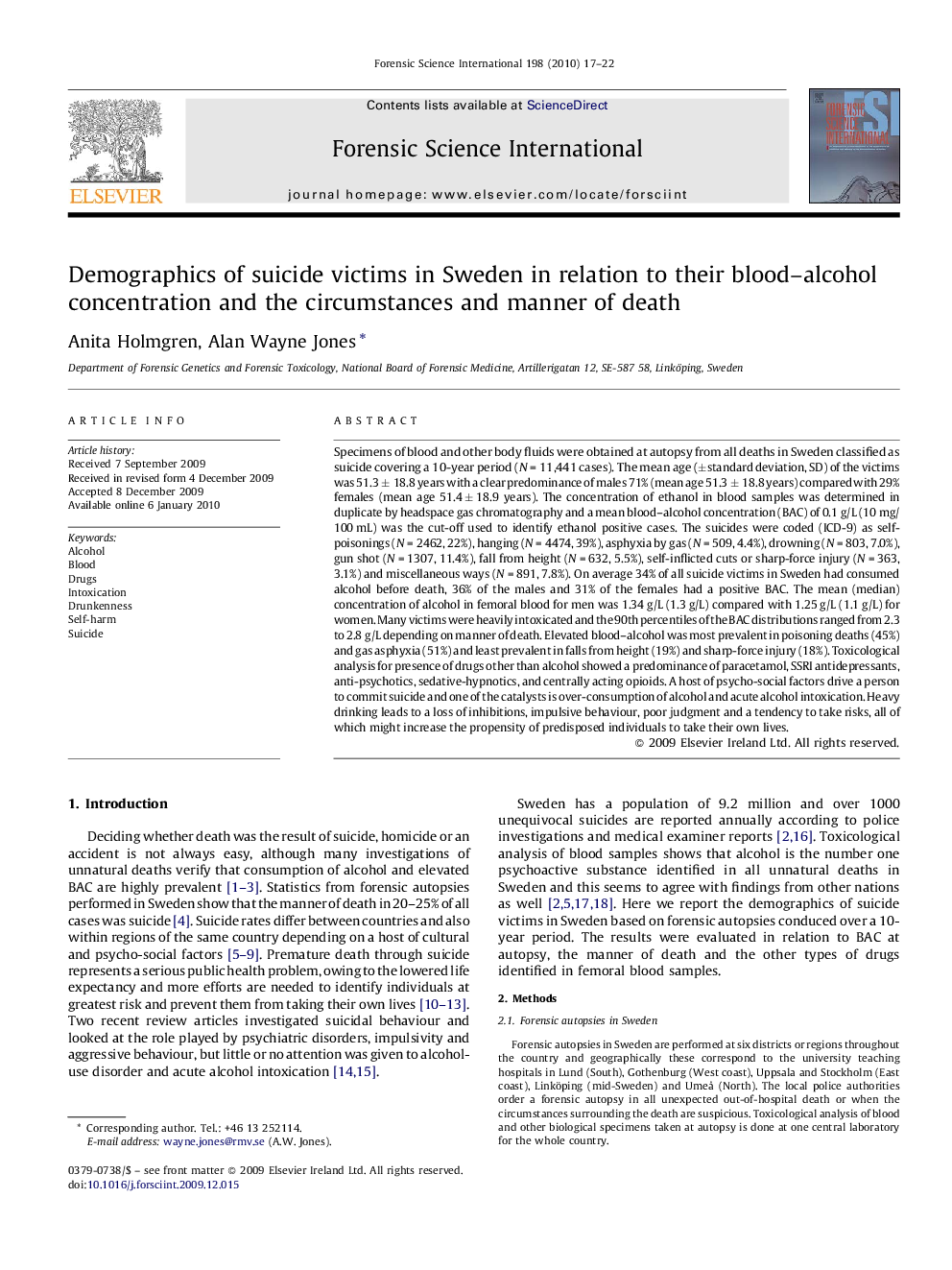| کد مقاله | کد نشریه | سال انتشار | مقاله انگلیسی | نسخه تمام متن |
|---|---|---|---|---|
| 97065 | 160480 | 2010 | 6 صفحه PDF | دانلود رایگان |

Specimens of blood and other body fluids were obtained at autopsy from all deaths in Sweden classified as suicide covering a 10-year period (N = 11,441 cases). The mean age (±standard deviation, SD) of the victims was 51.3 ± 18.8 years with a clear predominance of males 71% (mean age 51.3 ± 18.8 years) compared with 29% females (mean age 51.4 ± 18.9 years). The concentration of ethanol in blood samples was determined in duplicate by headspace gas chromatography and a mean blood–alcohol concentration (BAC) of 0.1 g/L (10 mg/100 mL) was the cut-off used to identify ethanol positive cases. The suicides were coded (ICD-9) as self-poisonings (N = 2462, 22%), hanging (N = 4474, 39%), asphyxia by gas (N = 509, 4.4%), drowning (N = 803, 7.0%), gun shot (N = 1307, 11.4%), fall from height (N = 632, 5.5%), self-inflicted cuts or sharp-force injury (N = 363, 3.1%) and miscellaneous ways (N = 891, 7.8%). On average 34% of all suicide victims in Sweden had consumed alcohol before death, 36% of the males and 31% of the females had a positive BAC. The mean (median) concentration of alcohol in femoral blood for men was 1.34 g/L (1.3 g/L) compared with 1.25 g/L (1.1 g/L) for women. Many victims were heavily intoxicated and the 90th percentiles of the BAC distributions ranged from 2.3 to 2.8 g/L depending on manner of death. Elevated blood–alcohol was most prevalent in poisoning deaths (45%) and gas asphyxia (51%) and least prevalent in falls from height (19%) and sharp-force injury (18%). Toxicological analysis for presence of drugs other than alcohol showed a predominance of paracetamol, SSRI antidepressants, anti-psychotics, sedative-hypnotics, and centrally acting opioids. A host of psycho-social factors drive a person to commit suicide and one of the catalysts is over-consumption of alcohol and acute alcohol intoxication. Heavy drinking leads to a loss of inhibitions, impulsive behaviour, poor judgment and a tendency to take risks, all of which might increase the propensity of predisposed individuals to take their own lives.
Journal: Forensic Science International - Volume 198, Issues 1–3, 20 May 2010, Pages 17–22